With cooler than average temperatures over the past several weeks forsythias, flowering pears, magnolias, and cherries remain in bloom, though with warmer weather they will fade quickly. In my garden the uppermost branches of serviceberry (Amelanchier canadensis, below) that reach into the sun have begun to bloom. The shaded lower branches will flower in a few days. The multi-trunked serviceberry is planted at the forest’s edge, and it leans at a severe angle to reach the sun, just as it does in its native habitat. I have attempted to prune the tall, arching branches to encourage a more compact form, but the tree refuses to cooperate.
The redbuds will be flowering in a few days. I have noticed that the top half of the red leafed ‘Forest Pansy’ (Cercis canadensis ‘Forest Pansy’ buds ready to open, below) that is perched at the edge of one of the ponds is dead, though the remainder of the tree appears to be in good health. The soil surrounding the redbud is often wet, and most trees will not tolerate such a damp soil. 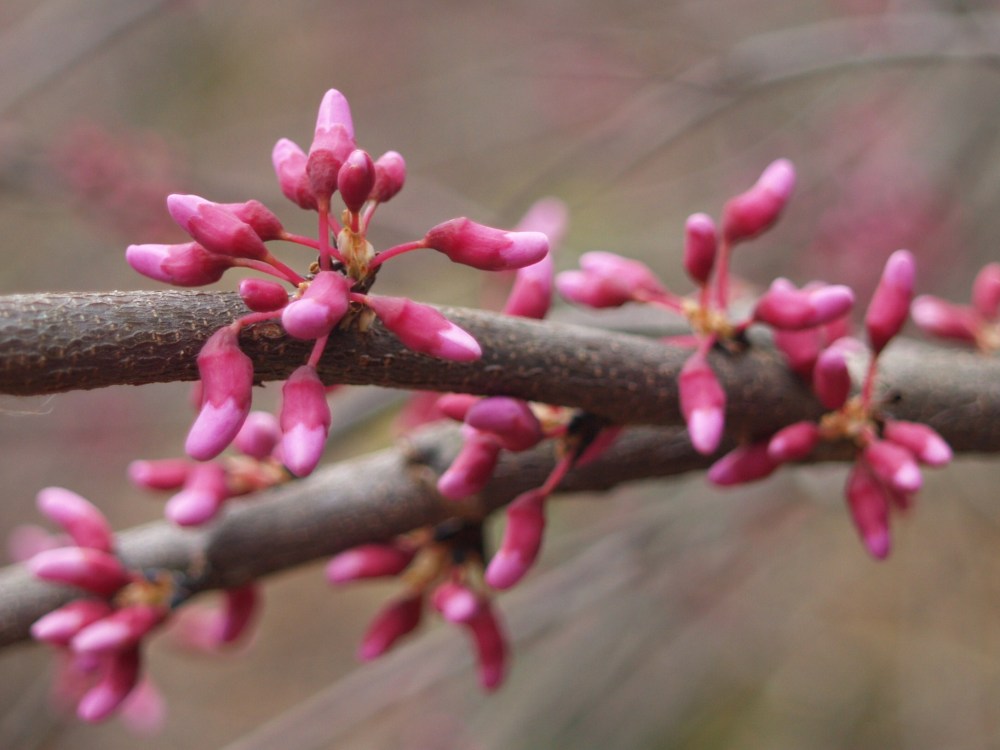
The ‘Silver Cloud’ redbud that was nearly broken in half by heavy snow this winter will flower as normal, but its long term survival is in question. I’ll anxiously monitor its progress through the year, but trees are often more forgiving than you expect, so it will probably be fine.
The dwarf peach that sits along the driveway is blooming, though an umbrella pine and a contorted sort of cypress hide it from the road, and a large holly partially obscures it from being seen as you enter the driveway. A large Jane magnolia has grown over half of the peach, and so the poor tree struggles for its place in the garden. To my recollection the tree was called a dwarf Mandarin peach, and I don’t know if the fruits are worth trying to harvest, but I’ve never tried.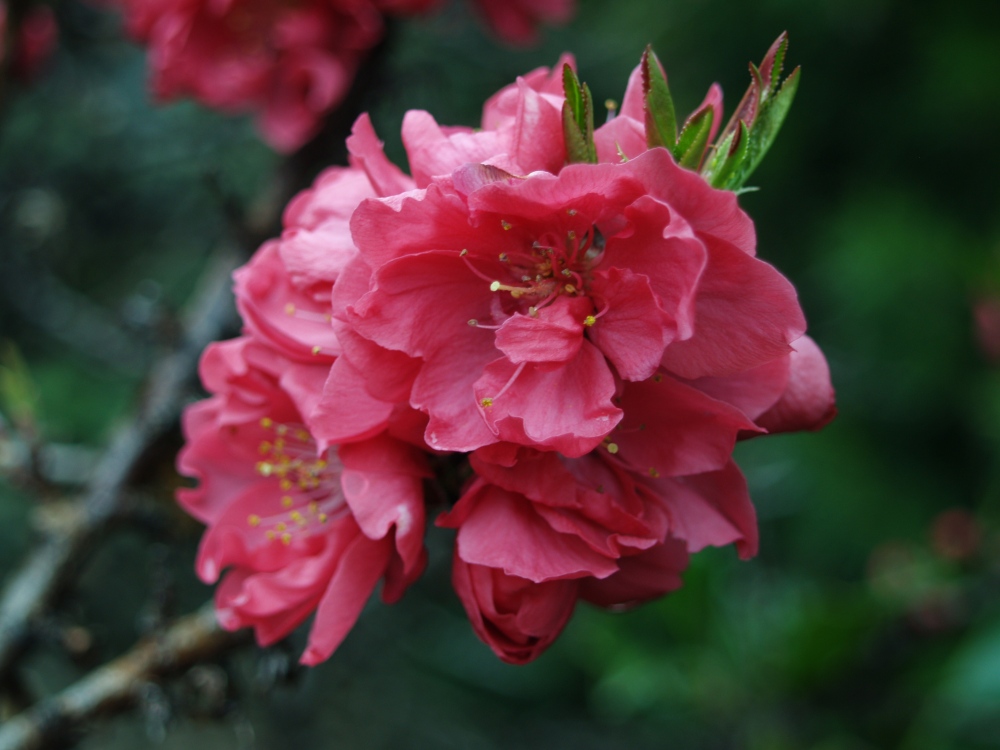
When given more room the peach is covered in blooms early in April, and each flower develops into a fruit unless the spent blooms are stripped away. With hundreds of peaches, none develops to an edible size, so all are ruined, and in late autumn the branches are lined with blackened peach pits.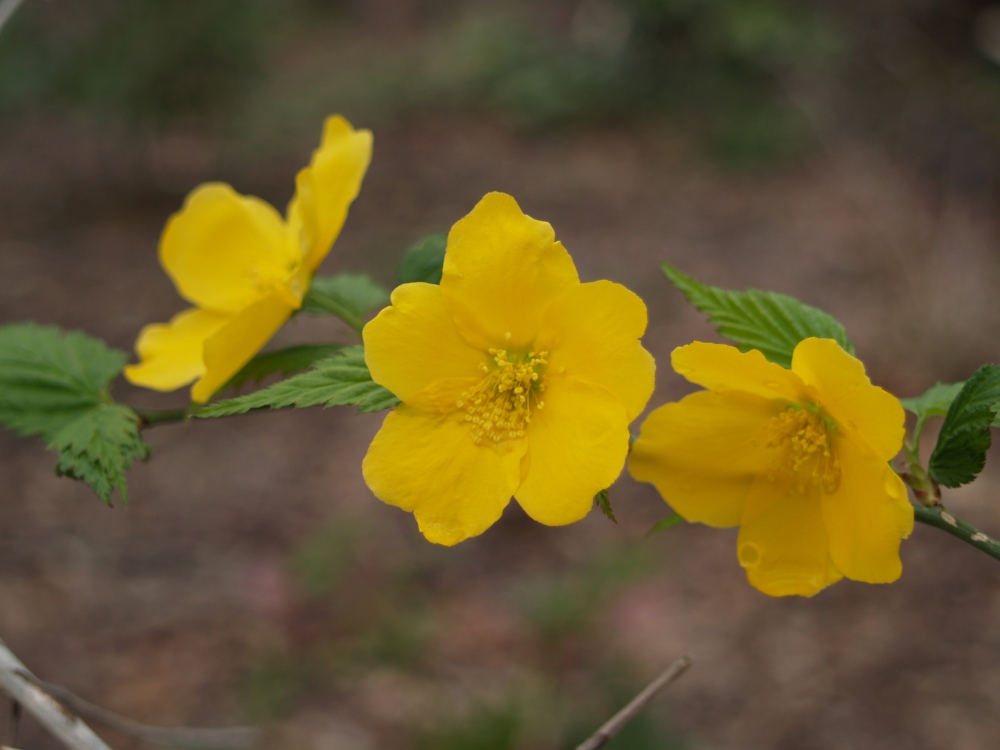
At the edge of the spring fed creek that runs along the southern border of the garden, Japanese kerria (Kerria japonica, above) grows in deep shade, probably a bit too dark for its liking since it has declined considerably the past few years. Still, it is blooming, and if I had good sense I would transplant it into more partial shade. I know, very unlikely.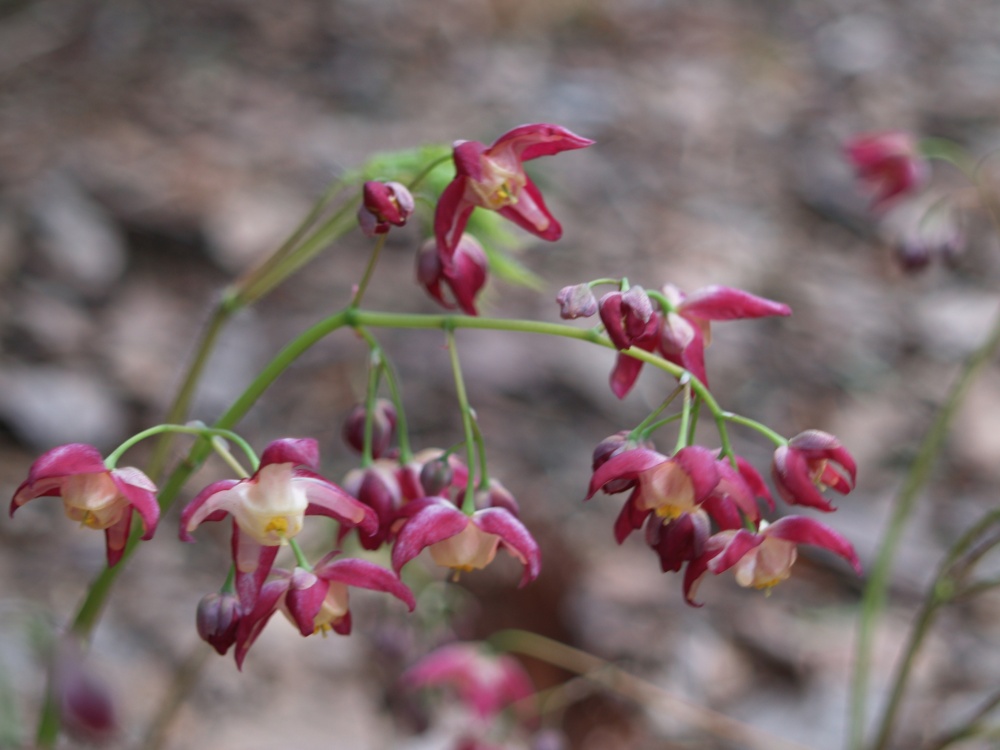
I continue to marvel that epimediums (above and below) thrive in dry, shady, root filled clay beneath the tall maples and poplars at the wood’s edge. In late winter the partially evergreen stems attract maple leaves so that they are best cut at ground level early in March. The flowering stalks arch above the newly emerging foliage, and it is not difficult to understand why their common name is Fairy Wings.
Cypress spurge (Euphorbia cyparissias, below) creeps along beneath taller evergreens, beside granite boulders, and pops up in gaps between stones in the patios. In April the needle-like foliage is red, contrasting with the bright yellow blooms. The foliage fades to green late in the spring, but it remains fresh even through the heat and drought of summer. I was fortunate to purchase this when I did, because I have not seen it in a garden center or mail order catalog since, though I have seen it referenced as an aggressive thug. I’ve not found it to be so, though it is hemmed in by larger plants in every direction. Besides its foliage and flower color it has a wonderful texture alongside broad leaf plants, so I occasionally pluck a few sprigs to start elsewhere in the garden.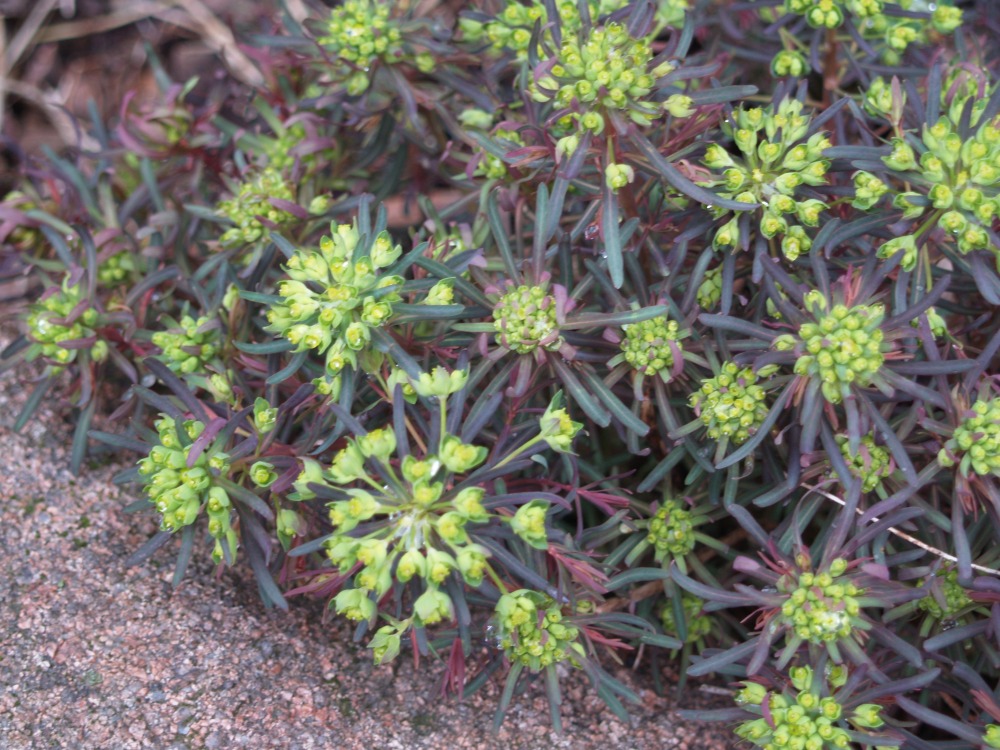
Through the years I have planted many hundreds of early spring blooming bulbs so that I know the names of only a few, and each year I am surprised to see alliums popping up here and irises (below) over there. Certainly they have been there for a number of years, but I suppose that my memory is not quite so good as it was. Bulbs are known to wander, of course, by seed, or perhaps due to critters who dig and drop them, so that they pop up in surprising places where I am quite certain that I didn’t plant them.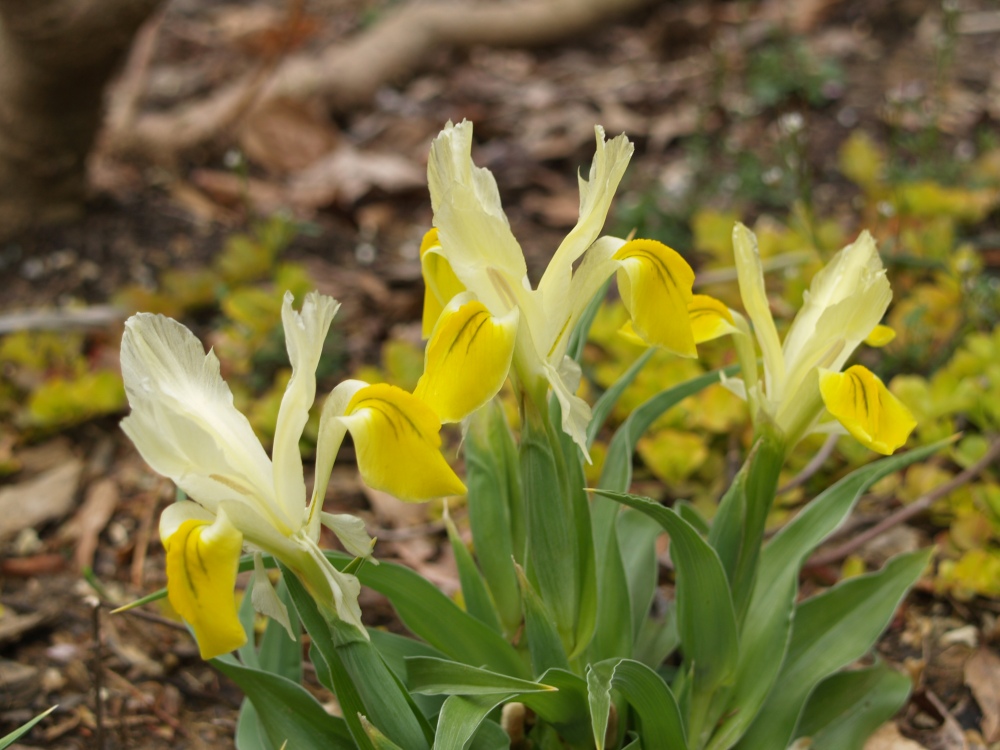
I have planted little patches of iris everywhere (Iris cristata ‘Tennessee White’, below), it seems, and though they are not in bloom for long, their coloration and markings are fascinating. Apparently I have not been able to restrain my impulse to add more, and with so many flowering today I have no regrets.